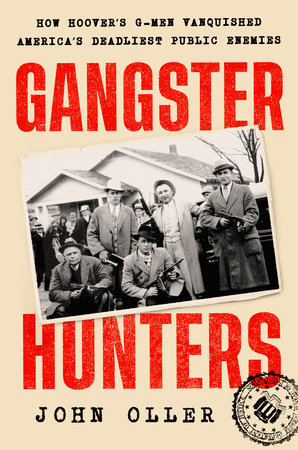

Novels in Three Lines
By Félix Fénéon
Introduction by Lucy Sante
By Félix Fénéon
Introduction by Lucy Sante
By Félix Fénéon
Introduction by Lucy Sante
By Félix Fénéon
Introduction by Lucy Sante
Category: True Crime
Category: True Crime

-
$15.95
Aug 21, 2007 | ISBN 9781590172308
-
Aug 17, 2011 | ISBN 9781590174197
YOU MAY ALSO LIKE

Three-Time World Champ

Gangster Hunters

Naples 1343

Red Hook

The Don

Starkweather

Framed

The Absinthe Forger

Ghosts of Crook County
Praise
“In these artfully concise summaries of news events, Feneon, an enigmatic French journalist and publisher, provides a glimpse of a belle epoque that belongs not to artists or intellectuals but to locksmiths, plumbers, seamstresses and the occasional sex offender.” —Los Angeles Times
“In 1906, suspected terrorist, anarchist, and literary instigator Félix Fénéon wrote more than a thousand small bits for the Paris newspaper Le Matin. Each was a bizarre yet enigmatic, fragmentary, often scandalous, report.” —Steven Heller, imPrint
“A Parisian anarchist, dandy and literary editor born in 1861, Feneon was at his most eloquent when saying as little as possible. Novels in Three Lines is a collection of what newspaper editors used to call squibs – very short news items, similar to the sentence fragments that populate modern cable news crawls. The book collects more than 1,000 news items (what the French call faits divers) printed in Le Matin in 1906, all anonymously written by Feneon. Century-old one-liners from French fishwrap might sound like a shaky premise for a book, but these true-life tales of murder, revenge, suicide, deceit and religious strife feature the fine carpentry of a literary stylist.” —Toronto Star
“Veering from horrific to hilarious and offering an acute overview of life at the time, these ultra-condensed tales of politics and mayhem hover between poetry and prose and redefine nonfiction… it is a seminal modernist masterpiece of form and sensibility, and still provocative. Sante did a brilliant job of translating it into English.” –CHOICE
“[D]eliciously tart and brilliantly compacted micro-vignettes of daily life in all its ironies, passions and dark mysteries.” –Sukhdev Sandhu
“These fillers, or fait divers,…recount all manner of assault, graft, accident, labor strife, and murder in spare, factually tidy detail…These epigrammatic plots invite being read aloud, as well as other diversions.” —Bookforum
“Layered, ironic, amused, Feneon’s voice is unmistakable..a little yo-yo of a narrative that gives pleasure no matter how many times it’s flung. The construction, the comic timing, the sly understatement that demands instant rereading.” —The New York Times
“Today’s lurid tabloid journalism has nothing on Novel in Three Lines, originally published anonymously in the French daily Le Matin in 1906. The man behind them was one Felix Feneon, part-time anarchist, and they reveal a delight in the fateful cruelties of life: Random shootings, premeditated suicides, and awful robberies were his main fixations. It’s no insult to our own taste for the sensational when we admit to finding Paris the city more fascinating than Paris the woman.” —New York Magazine
“The Feneon , like a book of haikus entirely devoted to suicide, murder, fatal accidents, and incestuous sex, is a creepy introduction to the shadowed brain cavity of a Neo-Impressionist who certainly believed in ‘propaganda by the deed’ and may have plotted one or more anarchist assassinations.” –Harper’s Magazine
“Prolific writer and cultural critic Sante (Low Life) has translated half a year’s worth of concise news blurbs written in 1906 for a Paris newspaper by Fénéon, writer, anarchist and promoter of artists like Seurat and Bonnard.” —Publishers Weekly
“[T]he “Nouvelles en trois lignes”…were simply news items concerning accidents, quarrels, mayhem, fires and murders, reduced to minimal length and rendered tragic-comic or ludicrous by artful diction, euphemism, understatement and other devices. They have stylistic interest, contain political and social overtones, and convey a concept of the absurdity of life.” —French Review
“Fénéon is best known today for his early championing of such men as Arthur Rimbaud, Francis Poictevin, and Jules Laforgue; for the art criticism that helped establish Neo-Impressionism…; for his Nouvelles in trois lignes, the pithy and often startlingly phrased newspapers accounts of current events that have been cited as predecessors of ‘minimal’ story writing; and for the exhibitions and sales of contemporary paintings he organized at the Bernheim-Jeune gallery after 1906.” —American Historical Review
“As a regular journalist, Fénéon is best remembered for his devastatingly spare News stories in Three Lines for Le Matin–cruelly deadpan summaries of the minor dramas of the day.” —Burlington Magazine
“In his time, Félix Fénéon was one of the most influential critics of art and literature in fin-de-siecle Paris… He was, clearly, a man to whom history–cultural history–owes some recognition.” —The New York Times Book Review (James R. Mellow)
“Félix Fénéon, editor, critic and stylist extraordinaire…the most brilliant critic of the day.” —The New York Times (John Russell)
“[T]he era’s most influential art critic” —The New Statesman
“The fastidious editor Félix Fénéon, who placed an incisive style in the service of avant-garde interests on every front, married rhetoric and action, art and politics. Closely associated with Symbolism, and with the Neo-Impressionism whose theoretical and formal basis he defined in 1886, Fénéon was probably the most important art critic of the late nineteenth century. While conscientiously clerking at the War Office, he used his discerning eye to appreciate literary and visual subversion…” —The New Republic
“[T]he greatest critic of his age” —William Everdell author of The First Moderns
21 Books You’ve Been Meaning to Read
Just for joining you’ll get personalized recommendations on your dashboard daily and features only for members.
Find Out More Join Now Sign In










